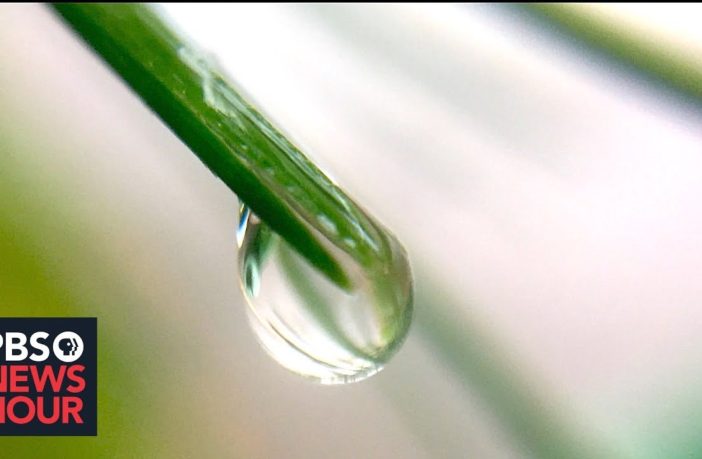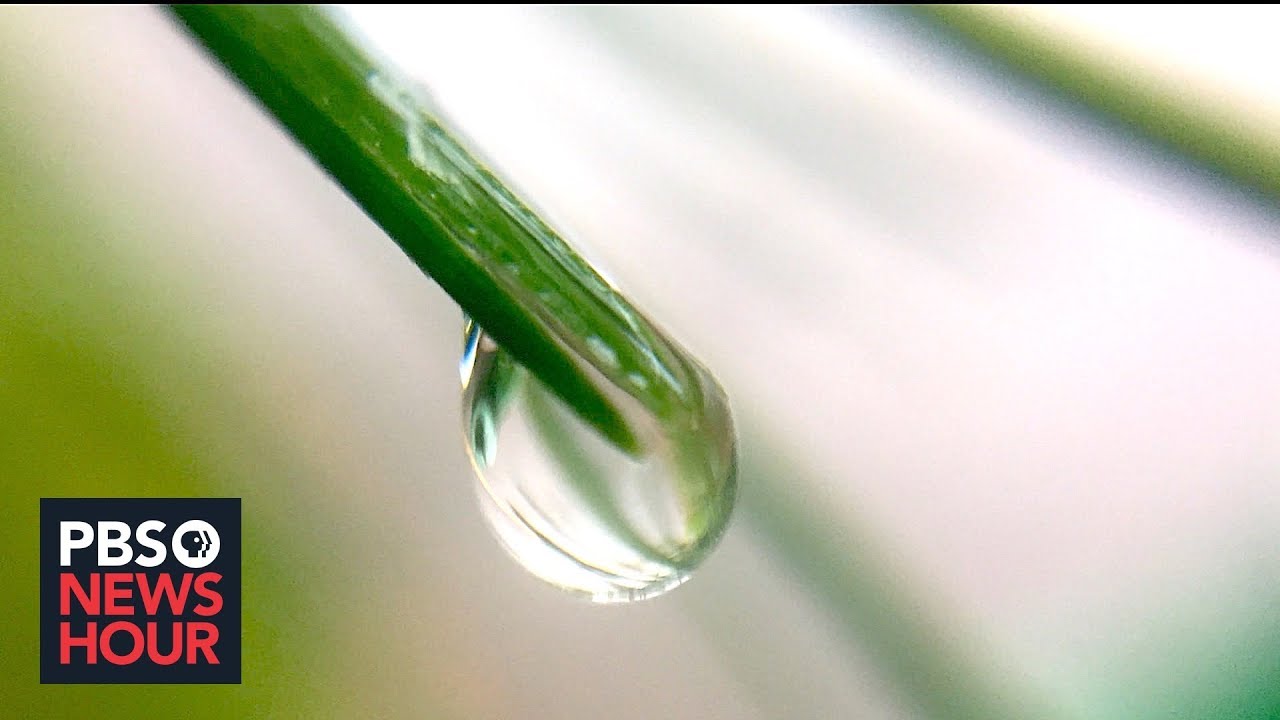PBS NewsHour
The global water supply is constantly and increasingly threatened by climate change, over consumption and poor management, among other forces. In an effort to bolster it, scientists around the world are leveraging familiar scientific principles with modern technology to capture water from the moisture in fog. John Yang reports on these innovative efforts to address the worsening water crisis.
Read the Full Transcript
-
Judy Woodruff:
The global water supply faces constant and worsening threats, climate change, overconsumption, poor management.
It’s a challenge pushing scientists, politicians and designers to hunt for innovations that could lead to new sources of water.
John Yang reports one such effort that involves innovation for our Breakthroughs series on the Leading Edge of science and technology.
-
John Yang:
Situated on the edge of the Sahara in Southern Morocco, Mount Boutmezguida gets only about five inches of rain a year. But what it lacks in rain, it makes up for in fog, which blankets the area for about half the year.
So that’s where residents have now turned for their water, harvesting it from fog. Alongside scientists from the German Water Foundation, the Moroccan non-profit Dar Si Hmad has set up what’s said to be the largest fog collection project in the world, about 19,000 square feet of nets called cloud fishers.
As fog rolls through, the mesh traps freshwater, which drips into a receptacle. A network of pipes takes it to the villages below, where about 1,000 people every day use it for drinking and watering plants and animals.
Jamila Bargach is director of Dar Si Hmad.
-
Jamila Bargach:
The fact of having water has radically transformed the life of the women, who used to walk for hours to get water, one and two. There was always the fear of not having enough water. Right now, that fear is not there anymore.
-
John Yang:
But in other places, the fear remains.
Experts say there’s a global water crisis, with at least two-thirds of the population living in areas that lack water one month a year or more. This summer, Chennai, India, has had to rely on water deliveries from tanker trucks.
A poor monsoon season left all the city’s reservoirs dry.
-
Betsy Otto:
The relationship between water supply on the one hand and water demand on the other hand.
-
John Yang:
Betsy Otto directs the World Resources Institute’s Global Water Program.
-
Betsy Otto:
We’re seeing really significant shifts, much more erratic rainfall. Snowpack and glaciers that have been very important sources of slow-release water to much of the world are disappearing. So we’re seeing really significant changes from global climate change.
-
John Yang:
While collecting water from fog may sound revolutionary, it’s actually an ancient technique and one found in nature.
An African beetle species captures fog droplets with small bumps on its back. And archaeologists have found evidence it was used centuries ago in the Middle East and South America.
How can we get as much water as possible from fog today? With climate change and high consumption making water scarcity a growing problem around the world, researchers are tackling that question.
One technique is being tested here at this farm at Virginia Tech.
-
Brook Kennedy:
We’re fog harvesting.
-
John Yang:
Industrial design professor Brook Kennedy is part of the team that developed the Fog Harp. It uses tightly placed vertical wires, as opposed to crisscrossing mesh.
-
Brook Kennedy:
Either they tend to be too open, so a lot of fog passes through them, or they’re too tightly woven, and so the fog droplets get stuck. What we have done differently here is that we have removed the horizontal wires, and this prevents the water droplets from getting stuck. So they quickly, through gravity, drop away.
-
John Yang:
Tests have found this design to be at least three times more effective at capturing water than traditional nets.
For Kennedy, this was a case of biologically-inspired design, influenced, in part at least, by California redwoods. The towering trees draw most of their water from fog accumulating on their needles.
-
Brook Kennedy:
The solution isn’t embedded with circuits and other high-tech accoutrements or features. It’s a fairly simple solution, but yet, by just tweaking meaningfully the design, really at a small scale, the results are rather dramatic.
What would their visual form be?
-
John Yang:
The team is now working on the next generation of fog harps, making them sturdier, more colorful, exploring the best wiring material. Within a few years, the plan is to test hundreds of harps in places battling water scarcity, like Peru or South Africa.
In Cambridge, Massachusetts, MIT scientists are trying to take the innovations surrounding fog collection even further. They have discovered that zapping air rich in fog with a beam of electrically charged particles draws the droplets toward the mesh, dramatically increasing its ability to collect water.
-
Man:
Right now, the system is off. So you can see that this plume can pass through the mesh unaffected, and then it goes around. But when we turn the electric field on, the plume vanishes instantaneously and then water starts collecting on that mesh.
-
John Yang:
The idea is to use the system on power plant cooling towers.
Almost 40 percent of all freshwater taken from U.S. rivers, lakes and reservoirs is set aside for that critical purpose.
MIT mechanical engineering professor Kripa Varanasi leads the team.
-
Kripa Varanasi:
We have been able to fundamentally change the trajectory of these droplets. In fact, we saw these drops that are going away make a U-turn and come back. And so we went from a half to a couple of percent efficiency to almost 100 percent efficiency.
-
John Yang:
While both the projects are promising, the expert, the scientist, and the designer agree: Water innovation must be coupled with better water management.
-
Betsy Otto:
We’re going to have to find new ways of storing it or capturing it in places that used to have more water than they will now have.
Yes, it’s important to have those technologies, but that alone is not enough.
-
Kripa Varanasi:
Water is a very passionate topic for me, coming from India, where water is a major crisis.
It’s a big societal problem and not as simple you have a power plant, I can sell you this thing.
-
Brook Kennedy:
It’s not going to be the only measure that needs to be taken. I mean, I think conservation, in combination with other techniques, working in unison, will help us tackle water scarcity.
-
John Yang:
That combination may mean the difference between losing or maintaining one of the most basic elements of life on Earth.
For the “PBS NewsHour,” I’m John Yang.








